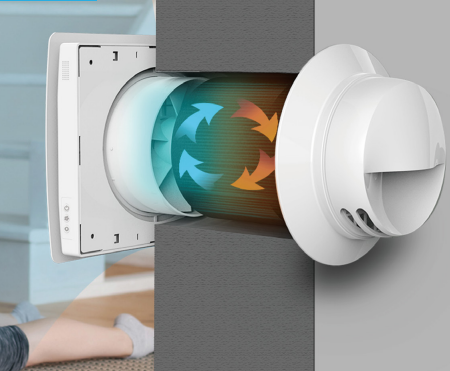The Top 5 Questions Homeowners Ask About HRV
The All-Inclusive Overview to the Uses of Heat Recovery Ventilation in Modern Buildings
Heat Recovery Ventilation (HRV) systems stand for a considerable development in developing technology (HRV Heat Recovery Ventilation). They give an approach for exchanging stale indoor air with fresh outdoor air while reducing power loss. This technique not just boosts indoor air high quality however also adds to energy performance in both property and business buildings. Understanding the various applications and advantages of HRV can reveal its critical function in modern-day style and sustainability efforts. The implications of this modern technology are worth discovering additionally
Understanding Heat Recovery Ventilation Systems

Although many contemporary structures prioritize power efficiency, comprehending heat healing ventilation (HRV) systems is crucial for maximizing interior air high quality and minimizing power intake. HRV systems work by moving warm from stale interior air to incoming fresh air, efficiently preserving comfy interior temperatures while reducing energy loss. These systems contain a warmth exchanger, followers, and ductwork that promote the circulation of air. Throughout winter, HRV systems record and reuse warmth from the outward bound air, while in summer, they can help cool inbound air. By continually trading air, HRV systems likewise decrease humidity and the focus of indoor toxins. Correct installment and upkeep of HRV systems are vital for their performance and performance in enhancing total structure efficiency and convenience.
Benefits of Heat Recovery Ventilation
Heat recovery ventilation systems offer many benefits that improve both energy performance and interior air top quality in contemporary buildings. By capturing and reusing energy from exhaust air, these systems considerably lower cooling and heating costs, resulting in reduced energy consumption. Furthermore, they maintain a consistent circulation of fresh outdoor air, minimizing the threat of interior air toxins and irritants. This continuous exchange helps manage moisture levels, preventing mold development and guaranteeing a much healthier living setting. In addition, HRV systems add to sustainability goals by lowering overall carbon footprints. Their ability to enhance ventilation without giving up thermal convenience makes them an important addition to modern structure layout, promoting both economic and environmental benefits.
Applications of HRV in Residential Structures
As house owners significantly prioritize energy efficiency and interior air high quality, the applications of warm recovery ventilation (HRV) systems in household buildings have actually become much more common. HRV systems are specifically beneficial in tightly sealed homes, where maintaining fresh air circulation is essential for stopping wetness buildup and interior contaminants. They effectively move warm from outbound stale air to inbound fresh air, reducing power expenses associated with heating & cooling. Furthermore, HRVs can enhance comfort levels by controling moisture and temperature level. They are additionally adaptable for numerous household designs, including single-family homes and multi-unit buildings. On the whole, integrating HRV systems sustains lasting living practices while making certain a healthier interior environment for owners.
HRV in Commercial and Commercial Settings
In commercial and commercial settings, the execution of heat recuperation ventilation (HRV) systems has actually become significantly crucial for this page optimizing energy effectiveness and preserving air quality. These systems properly transfer warmth from exhaust air to inbound fresh air, lowering the demand for additional heating or cooling. This not just lowers energy prices but likewise contributes to sustainability efforts. Industries such as manufacturing, warehousing, and office structures benefit significantly from HRV systems, as they help control temperature level and humidity levels, ensuring a comfortable and efficient atmosphere. HRV systems aid in removing pollutants and excess dampness, enhancing interior air top quality. As guidelines around air top quality become more stringent, the fostering of HRV innovation is most likely to grow, making it a crucial element of modern-day commercial and commercial framework.
Future Patterns in Heat Recovery Ventilation Modern Technology

Frequently Asked Concerns
How Does Heat Recovery Ventilation Effect Indoor Air Top Quality?
Heat recovery ventilation greatly enhances indoor air top quality by continually trading stagnant interior air with fresh outdoor air while recuperating energy. This procedure lowers contaminants, keeps perfect moisture levels, and guarantees a healthier atmosphere for passengers.
Can HRV Systems Be Mounted in Existing Buildings?
HRV systems can without a doubt be installed in existing buildings. Retrofitting may require modifications to ductwork and air flow layouts, but it considerably boosts power efficiency and indoor air top quality, making it a viable choice for older frameworks.
What Maintenance Is Needed for HRV Solutions?

Are There Details Climates Where HRV Is Extra Effective?
Heat recovery ventilation systems are especially reliable in weblink climates with significant temperature distinctions in between periods. These systems maximize power efficiency by recovering warmth from exhaust air, making them excellent for both cold and moderately cozy settings.
Exactly How Do HRV Equipments Affect Energy Costs?
